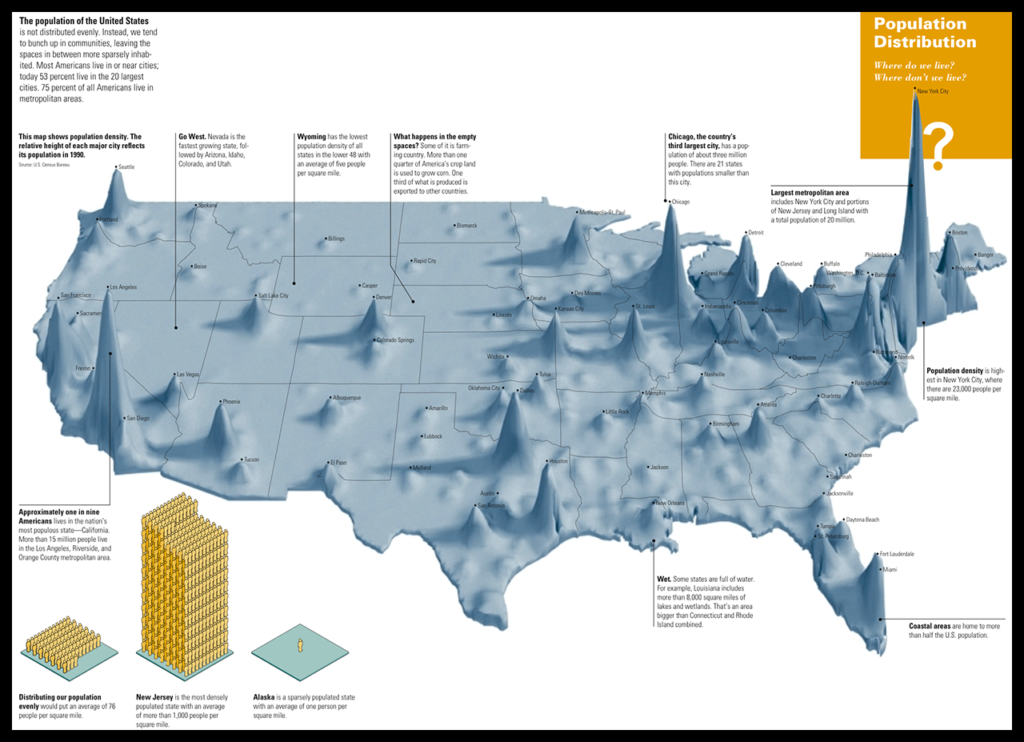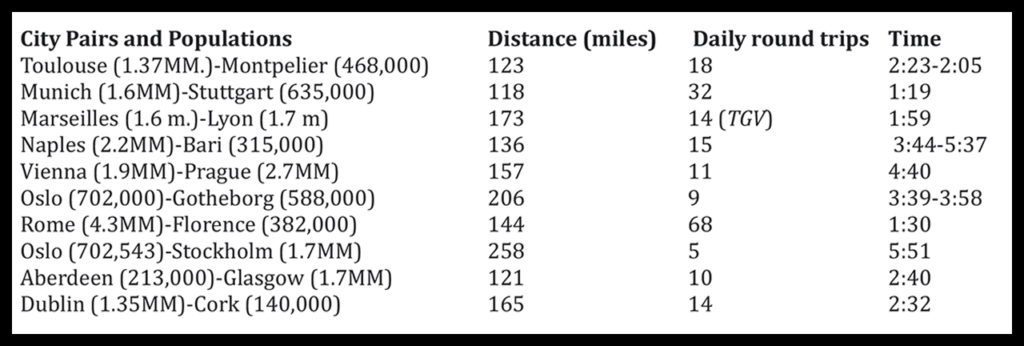
The Big Anti-Passenger Train Canard: Shoot, Pluck, Gut, Stuff and Cook It
Written by F. K. Plous
The dictionary defines a “canard” as a false or unfounded report or story, especially a fabricated report, or a groundless rumor or belief. “Canard” actually is the French word for “duck.” Nobody knows for sure why the French used an innocent (and delicious animal) to stand for false reporting. But before you dismiss “canard” as Gallic capriciousness, please remember that in American English, a bogus physician is called a “quack.”
A canard is not exactly the same as a lie, which most of us understand from childhood to be a desperate attempt at escaping blame. “Johnny, did you paint your sister’s bike black?” says Daddy. And Johnny says, “No,” which Daddy quickly identifies as a lie and then punishes Johnny not just for the paint job but for trying to escape responsibility for it. That’s how most of us understand “lie.”
The canard type of lying is different. It’s used not to dodge blame but to distort reality and set the listener up for a shakedown. A good example is the canard often used to discredit the idea of creating a modern passenger rail system in the United States.
The canard goes like this: “Passenger trains make sense in Europe because European countries have a high population density, but in the U. S. our population is too spread out to support a passenger rail network. Cars and airplanes are all we need to get around.”
The anti-passenger train lobbyists—many of whom come from the bogus “institutes” and “think tanks” that actually are nothing but propaganda mills funded by wealthy, ultra-right-wing companies like Koch Industries—have been peddling the same low-population-density canard for years without ever providing any numbers. I know lots of passenger train advocates, but few of them ever called out these characters by asking them to produce some actual population density figures. It’s not a challenging task requiring serious math. All it requires are some basic arithmetic and a good set of maps.
The most recent example of the population-density canard came August 22 in a Forbes guest editorial by Ike Brannon, a Senior Fellow at the Jack Kemp Foundation:
“[T]his country is too big for passenger rail to be cost-effective in most places, except for connecting dense cities that are a relatively short distance apart. For instance, a trip from New York to Washington, D.C., a little more than 200 miles, takes just a few minutes longer via train than a plane trip, taking into account travel to and from the airport and train stations, and is usually less expensive.”
This is another example of the “passenger-trains-make-sense-only-in-the-Northeast Corridor” canard, a rich vein of rhetorical ore worked relentlessly for decades by highway apologists like Bannon (and sometimes by Amtrak itself). It’s invoked so often that millions of Americans—and even some passenger-train advocates—believe it almost by instinct, even though the forces spreading the canard never bother to submit any numbers in its support.
So what are the numbers? Is the NEC truly the only part of the U.S. with the “European” demographics needed to support passenger trains?
Start With a Look at the Map

A casual look at the map would seem to confirm the canard. The U.S. covers a very large territory—3,000 miles coast to coast—and more than a quarter of that territory is virtually empty from border to border, while settlement in the Northeast is comparatively dense. But drill down and start adding up numbers, and the first impression of an underpopulated U.S. begins to collapse. Turns out that the three-quarters of the nation on either side of the center have plenty of people and plenty of cities spaced appropriately for passenger-train service.
California, for example, is virtually a nation unto itself, with the sixth biggest economy in the world and 39 million people living in a series of large and medium-size cities conveniently linked into a train-friendly strip configuration. Topography has trapped most of California’s population in a narrow band between the Pacific shore and the Sierras, or in a second band—the Central Valley—between the Sierras and the desert. The cities in both the coastal and central strips are almost ideally configured for passenger trains (and the Central Valley will work even better once it gets a tunnel under the Tehachapis to connect it with the L.A. Basin). No wonder California is building America’s first true high-speed rail system. Its topography and demographics virtually spell “passenger train.”
North of California, demographics and topography are starting to nudge Oregon and Washington in the same direction. Both are big states with lots of empty space, but, as in California, the earth itself forces most of the population into a narrow strip between the mountains and the sea—an ideal configuration for a high-performance passenger-train line connecting Eugene (pop. 170,000), Portland (2.5 million), Seattle-Tacoma (4 million) and Vancouver, B.C. (2.6 million). The whole corridor is a nice European 310 miles long, making the train ideal both for end-to-end travel and short hops between intermediate stops.
Another mountain cordillera, the Rockies, is creating the same kind of demographics along the Front Range, a train-friendly strip of fast-growing cities running from Cheyenne down to Boulder, Denver, Colorado Springs and Pueblo. Americans from the East continue to settle the West, and when they do, they settle in strips of cities at the foot of a mountain range.
Oh, and don’t forget Las Vegas. Until the New Deal brought in an army of workers to build Boulder Dam, it was little more than a desert division point on the Union Pacific and a mecca for quickie marriages and divorces. Today, it’s a booming metro area of 2.8 million with a cozy relationship with Los Angeles, a rail-friendly 265 miles away. No wonder Brightline is assembling right-of-way for a 125-mph L.A.-L.V. passenger railroad.
And don’t forget Phoenix, either. Already at 5 million, it’s one of the three fastest-growing cities in the U.S. And 116 miles east is Tucson, with 545,000. In Europe, this corridor would have hourly shuttle-train service.
East of the Front Range, Bannon’s canard has some substance to it. The buffalo prairie we call the Great Plains has few cities, none of them is big, and most are too far away from one another to justify a high-frequency passenger train service. Most of the Dakotas, Nebraska, Kansas and Oklahoma are virtually empty. If you include those spaces in a population density computation for the whole country, they drag the average down to the point where passenger trains look absurd.
But move a little to the east, start thinking regionally, and the picture starts to change again as more “little Europes” appear.
Along a line roughly following I-35, cities of substantial size begin grouping themselves into a configuration that in Europe (and most of Asia) would qualify for multiple daily passenger train frequencies. The Twin Cities, Des Moines, Omaha, Lincoln, Kansas City, Lawrence, Topeka, Wichita, Oklahoma City, Dallas-Fort Worth and San Antonio all have the right combination of population and position to make them eligible for a combination of daily passenger train shuttle services and even an overnight long-distance train covering the entire route.
And once you move east of the I-35 corridor, the number of potential intercity passenger-rail corridors explodes. St. Louis-Kansas City—285 miles—is a natural for a fleet of shuttle trains. The St. Louis metro population is 2.8 million. Kansas City’s is 2.4 million. Those are better railroad demographics than Munich-Vienna—1.6 million and 1.9 million, respectively—connected by 22 daily RailJet round trips at 140 mph. So is Louisville-Nashville (159 miles). So is Atlanta-Jacksonville, Cleveland-Columbus-Dayton-Cincinnati, Chicago-Indianapolis-Cincinnati (with an Indianapolis-Louisville leg and a Louisville-Cincinnati leg) and dozens of other city pairs eligible for a buildup in passenger rail service (and infrastructure).
Don’t forget the Texas Triangle—Dallas-Fort Worth, Houston and San Antonio. The mileages and the populations scream “High Speed Trains!” Check out the numbers and see for yourself.
Anybody with a good map and Internet access to the latest census data can fill in the rest of the potential system. The fact is, the U.S. has dozens of “European”-configured corridors inside of it. There may be plenty of underpopulated space on the buffalo prairie, but the West Coast, the Front Range, the eastern third of the country and hot spots like L.A.-Las Vegas and Phoenix-Tucson actually have the demographic configurations surprisingly favorable to a variety of strong intercity passenger services. Need we say more about Florida? Brightline’s $3.7 billion investment testifies to America’s eligibility for passenger trains more than the most eloquent advocate’s essay.
Europe’s “Dense” Population: The Real Numbers
To get an idea of just how “European” some parts of the U.S. actually look, let’s examine some similar territories—and their passenger train connections—in Europe itself. The resemblances are remarkable. European cities and their hinterlands are configured a lot more like many American cities than the anti-passenger train forces would have you believe.
Here, for example, is one of the facts the canard peddlers won’t tell you: European cities are relatively small. Unlike Asia, famous for mega-cities like Tokyo (37 million), Osaka (19 million), Beijing (21 million), Shanghai (24 million) and Chongging (18 million), Europe has only two mega-cities, Moscow and Istanbul, each with about 15 million people. And some would argue that both these cities are on the margins of Europe rather than in Europe proper. Istanbul, in fact, is half in Asia. London, technically not in Europe but connected to it by rail, is pretty big—about 14 million—and Paris is a little bigger than New York at 11 million, but Berlin has only about 3.5 million people, Rotterdam, 1.05 million; Munich, 1.6 million; Florence, 382,000; and Vienna—”the imperial city without an empire”—1.9 million. Most of Europe’s “big” cities are about the size of Pittsburgh or Milwaukee. The following table shows how some typical European cities are connected to their neighbors by passenger train:

Ouch! Did you catch that last one? We expect America’s passenger trains to be shamed by the Japanese, the Chinese, the French and the Germans, but really—the Irish? With 14 daily round trips between a city of 1.35 million and a little seaport of 140,000? That’s like Indianapolis to South Bend.
And get a load of the Swedes and the Norwegians. Their population densities are sub-North American—so low that the new high-speed trains Sweden is ordering from Alstom will have reinforced noses to protect against collisions with elk. But the Swedes still plan to run multiple daily HSR frequencies between Stockholm and a series of satellite cities numbering less than a million as well as across the border into even less populated Norway.
The “American Way”: Is It Working?
As all followers of the U.S. railroad media know, Amtrak is seeking federal authority to inaugurate two daily round trips between New Orleans (pop. 1 million)—and Mobile, Ala. (pop. 400,000.) CSX Corp., which owns almost all of the 144-mile route, is insisting that two new passenger trains cannot be fitted into the operating regime of the route without degrading the performance of its freight trains.
I can’t vouch for the truth of CSX’s claim, but based on the mileages and populations in the European table, a city of 1 million and a city of 400,000 separated by 144 miles should be served not by two passenger trains a day but by at least eight. That level of frequency certainly would blow up CSX’s efforts to operate its freight railroad and would bring both the passenger and freight trains to a standstill. Any effective and successful passenger train service would require a second track just for the passenger trains, engineered to contemporary standards and enabling the passenger trains to zip between New Orleans and Mobile in about 90 minutes (with stops). The actual contemplated service, two daily frequencies at 70 mph, adds up to such meager gruel that the vast majority of travelers will stick with the automobile. And that would provide the anti-passenger train crowd with all the raw material for their next canard: “See? Even if you provide Americans with passenger trains they’ll still stick with cars.”
A look at the map, a survey of developments abroad and a review of the numbers leads to one conclusion: If this country is ever going to have effective passenger train service—the kind that has a major positive effect on mobility, safety, the economy and the environment—the federal government will have to fund a modern infrastructure on which American passenger trains can perform like the trains in Europe (including Ireland).

And what’s wrong with that? Congress already bought us a modern highway system and a modern network of computer-controlled airways and airports. Autos and trucks achieve their full potential because government provides them with the necessary platform. Airliners have become high achievers for the same reason. Now that we know how well passenger trains can perform, a network of modern passenger rail infrastructure for the U.S. is the next logical step.
And now that we know the real numbers, we know what to do with the old canard about America being too sparsely populated for passenger trains: Shoot it, pluck it, gut it, stuff it, cook it—and then serve it in the dining car.
F.K. Plous is a former Chicago & North Western Railway brakeman, former feature writer at the Chicago Sun-Times, author of a forthcoming biography of retired Illinois Central Railroad chairman and CEO Harry J. Bruce, and director of communications for Chicago-based Corridor Rail Development.


